Don't let cell phones ruin America's national parks
As John Muir wrote, "Only by going alone in silence ... can one truly get into the heart of the wilderness"
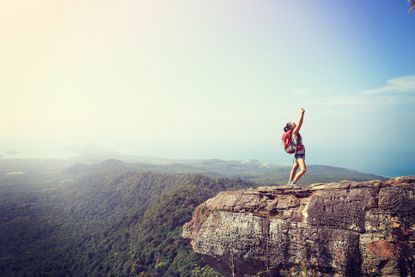

When John Muir wrote to his wife, Louie, in 1888 to say that "only by going alone in silence, without baggage, can one truly get into the heart of the wilderness," he could have in no way imagined the beeping, ringing, clicking, buzzing distractions we would carry with us everywhere in our pockets some 120-odd years later.
But at some point in the last two decades, the experience of being in the woods changed utterly and irrevocably. In addition to searching for wildlife or solace or peace in the untouched wilds of America, adventurers had a new quest to keep them occupied — the search for cell reception.
Romantics will wax-poetic about being "unplugged" and "off the grid" when hiking, backpacking, camping, or sightseeing at parks around the country, but do those of us crusty and nostalgic enough to celebrate the few remaining cell phone dead zones have a right to impose our preferences on other park-goers? Could the best way to save our national parks in fact be by promoting them as Insta-perfect backdrops, with a robust cellular network that allows photos to be instantly uploaded to our social media platform of choice? And what of safety, as more and more millennials flock to the woods?
Subscribe to The Week
Escape your echo chamber. Get the facts behind the news, plus analysis from multiple perspectives.

Sign up for The Week's Free Newsletters
From our morning news briefing to a weekly Good News Newsletter, get the best of The Week delivered directly to your inbox.
From our morning news briefing to a weekly Good News Newsletter, get the best of The Week delivered directly to your inbox.
It's a debate raging at the heart of my favorite national park, Mount Rainier, in Washington State. Verizon Wireless, T-Mobile, and AT&T are in the process of lobbying to co-install a cell phone facility at the Paradise visitor center, which would blanket the region in a comforting umbrella of contact to the outside world. Curiously, there is a nearly equal divide in public opinion about the plan, with the park receiving 249 comments in favor of the proposal and 241 against an early version of the proposition floated last year, The Seattle Times reports.
"Those that are in favor of the service referenced safety, access, ability to communicate and coordinate with others," said the park's superintendent, Randy King. "Those who didn't like the idea of cell service felt the park should be a place where you're out of reach of electronic devices. … They like the idea of refuge."
I fall in the latter camp — passionately. Mount Rainier has been my refuge, church, muse, and companion since I first learned to backpack, and I'm distraught at even the thought of the magic of Summerland, Indian Henry's Hunting Ground, or Spray Park being disturbed by a ring tone. But beyond my own preference to keep my phone off or my insistence that the wilderness is best experienced meditatively, without the distractions of home, cell phone dead zones are an asset that needs to be preserved and protected, just like the public lands themselves.
I'm not advocating for a return to a long-lost past, and I'm not ignorant to the march of technology. Times have changed, and often for the better and more comfortable; a trip to REI today can turn up solar charging panels and lightweight gear that would have seemed utterly impossible generations ago (and God bless the invention of DEET).
Rather, I'm advocating for a new way of looking at cellular dead zones — not as an annoyance, but as a kind of natural resource to protect and cherish. While this kind of thinking has yet to catch on, national parks are already acting against other encroachments of the modern world, such as protecting against light pollution by limiting the number or kind of bulbs that can be used after dark. "Our national parks hold some of the last remaining harbors of darkness and provide opportunities for the public to experience this critical resource," the National Park Service explains.
Is cell phone reception so different? Already travel enthusiasts encourage leaving phones at home or putting them on airplane mode for the extent of a vacation. A search for cell phone dead zones on Google quickly turns up lists of vacations where cell phones will flash their "no service" warning. "Ten cell phone dead zones worth a trip," Matador Network flaunts while Forbes recommends a visit to the 3,000 miles of desert in Death Valley to escape the chime of a text message.
Advocates for cell coverage in national parks might argue that if you don't like cell phones in the outdoors, then don't use them (of course, anyone who's been to a movie theater recently realizes the temptation to check a text often outweighs any consideration for one's neighbors). But beyond our own masochistic addiction to electronic devices and the responsibilities and anxieties they constantly notify us of, cell phones are just plain annoying. As one furious outdoor aficionado ranted in The Chicago Times:
The problem is that some people don't appreciate the difference between a national park and a theme park. It's one thing to use your cell phone to warn your pals that the line at Space Mountain is two hours long. It's another thing entirely to tweet the coordinates of a baby moose sighting.People who can't live without their cell phones aren't just the wrong demographic for Yellowstone. They're the very demographic the rest of us go to Yellowstone to escape. Let's not encourage them. The call of the wild doesn't need a ring tone. [The Chicago Times]
Of course, on the flip side there is a valid case to be made for the safety that cell phones can provide. Mount Rainier, for example, has between 40 and 50 search-and-rescue operations every year. "I think there are cases where [cell service] would have been helpful when we have been looking for people," admitted the park's superintendent, King, to The Seattle Times. He added, though, that knowing service was available "may encourage people to take risks they wouldn't otherwise take, to call for help and get it."
Oftentimes rangers say cell phones are a nuisance beyond visitors face-timing at trail heads. Larry Nickey, a search-and-rescue coordinator for Olympic National Park in Washington State told The New York Times in 2001, during the dawn of the cell phone craze, that while there are certain cases where mobile phones have saved lives, others are ... not so urgent:
The cell phone call came from the back country of Olympic National Park in Washington State. "I need a rescue," the hiker said.Park rangers asked the caller if he was lost. No, the hiker said, he knew where he was. Was he injured? No. Did he have enough food? Yes. Well then, what was the problem?"He had a meeting in Seattle," said [Nickey]. "He didn't have time to hike out." [The New York Times]
Perhaps the best point of all is that for centuries we've managed in the woods without our phones — as desperate as one might be at the thought of being disconnected for hours or days, it can in fact be done. But rather than be simply something to overcome — and post about on Twitter after 10 more off-the-grid hours — cell phone dead zones in national parks should be respected and treated with the same protections given to endangered birds, untapped rivers, and old growth forests.
As it stands now, it is ultimately up to each of the 59 national parks in America to decide on their own whether or not to raise cell phone towers. In order to protect dead zones as a resource, though, action is needed urgently. In Yellowstone, where five towers were erected with the assurance that backcountry service would be limited, "spillover" has been recorded and phone signals are "far more prevalent," The Associated Press reports. "It's a real drag at Artists Point," said Yellowstone Safari tour operator Ken Sinay, naming a popular overlook near Yellowstone Falls. "While people are trying to enjoy themselves somebody's on their phone waving their hands and gesturing and walking around in a circle."
Muir, the patron saint of preservation and a peaceful wilderness, also noticed the "thousands of tired, nerve-shaken, over-civilized people" who were "beginning to find out that going to the mountains is going home." Unfortunately, some 12 decades later, many of us have not yet learned how to also leave home behind.
Create an account with the same email registered to your subscription to unlock access.
Sign up for Today's Best Articles in your inbox
A free daily email with the biggest news stories of the day – and the best features from TheWeek.com
Jeva Lange was the executive editor at TheWeek.com. She formerly served as The Week's deputy editor and culture critic. She is also a contributor to Screen Slate, and her writing has appeared in The New York Daily News, The Awl, Vice, and Gothamist, among other publications. Jeva lives in New York City. Follow her on Twitter.
-
 'Make legal immigration a more plausible option'
'Make legal immigration a more plausible option'Instant Opinion Opinion, comment and editorials of the day
By Harold Maass, The Week US Published
-
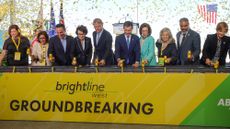 LA-to-Las Vegas high-speed rail line breaks ground
LA-to-Las Vegas high-speed rail line breaks groundSpeed Read The railway will be ready as soon as 2028
By Peter Weber, The Week US Published
-
 Israel's military intelligence chief resigns
Israel's military intelligence chief resignsSpeed Read Maj. Gen. Aharon Haliva is the first leader to quit for failing to prevent the Hamas attack in October
By Justin Klawans, The Week US Published
-
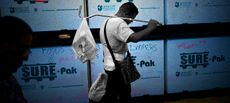 Why Puerto Rico is starving
Why Puerto Rico is starvingThe Explainer Thanks to poor policy design, congressional dithering, and a hostile White House, hundreds of thousands of the most vulnerable Puerto Ricans are about to go hungry
By Jeff Spross Published
-
 China is now just another autocracy
China is now just another autocracyThe Explainer On the long-lasting consequences of Xi Jinping's power grab
By Noah Millman Published
-
 Is America the main obstacle to peace in Korea?
Is America the main obstacle to peace in Korea?The Explainer There's only one way Korea would unify — and the United States won't stand for it
By Noah Millman Published
-
 Why on Earth does the Olympics still refer to hundreds of athletes as 'ladies'?
Why on Earth does the Olympics still refer to hundreds of athletes as 'ladies'?The Explainer Stop it. Just stop.
By Jeva Lange Last updated
-
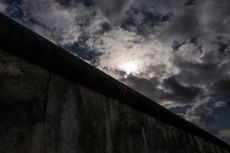 Berlin's wall and ours
Berlin's wall and oursThe Explainer What that signifier of the Cold War indicates about our unsettled historical moment
By Noah Millman Published
-
 The catastrophe in Yemen
The catastrophe in YemenThe Explainer A Saudi Arabian blockade has left millions of civilians starving, and without fuel or clean water. What is this conflict about?
By The Week Staff Published
-
 China's strongman
China's strongmanThe Explainer Xi Jinping is China's most powerful leader in decades. What are his plans for the country — and the world?
By The Week Staff Published
-
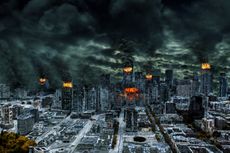 How to ride out the apocalypse in a big city
How to ride out the apocalypse in a big cityThe Explainer So you live in a city and don't want to die a fiery death ...
By Eugene K. Chow Published